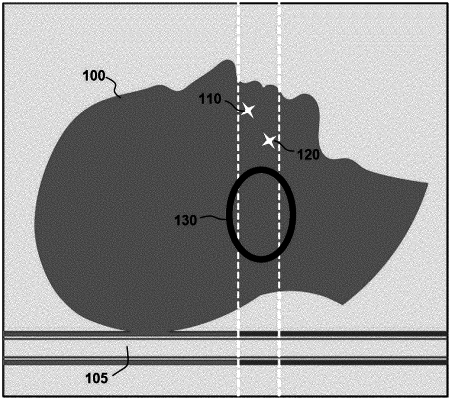| CPC A61B 6/032 (2013.01) [A61B 6/51 (2024.01); A61B 6/5241 (2013.01); A61B 6/5282 (2013.01)] | 10 Claims |

|
1. A method of imaging a region of a subject comprising an artifact, the method comprising:
obtaining a first computed tomography (CT) scan of the region, wherein the first CT scan comprises a first set of images obtained at a superior angle with respect to the subject;
obtaining a second CT scan of the region, wherein the second CT scan comprises a second set of images obtained at an inferior angle with respect to the subject;
performing a first three-dimensional affine geometric transformation to the first set of images and to the second set of images;
performing a second three-dimensional affine geometric transformation to the first set of images and to the second set of images;
converting the first set of images to a first modified set of axial images, wherein a first portion of the first modified set of axial images comprises a first artifact-free region posterior to the artifact;
converting the second set of images to a second modified set of axial images, wherein a second portion of the second modified set of axial images comprises a second artifact-free region posterior to the artifact; and
constructing an image of a region posterior to the artifact by combining the first artifact-free region posterior to the artifact and the second artifact-free region posterior to the artifact.
|